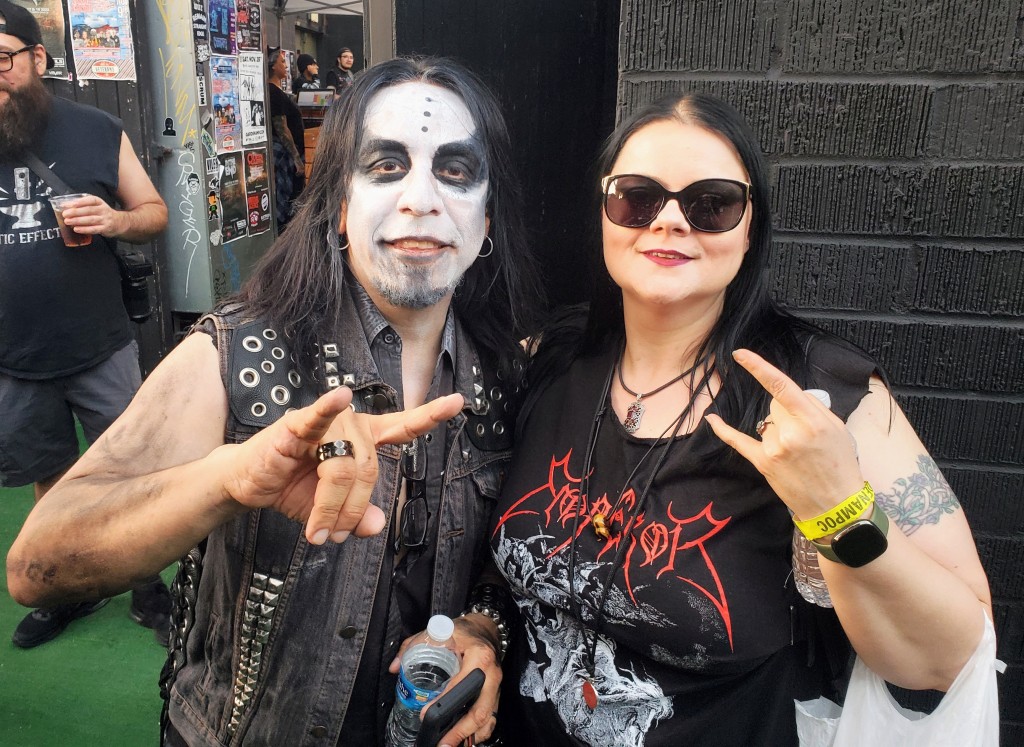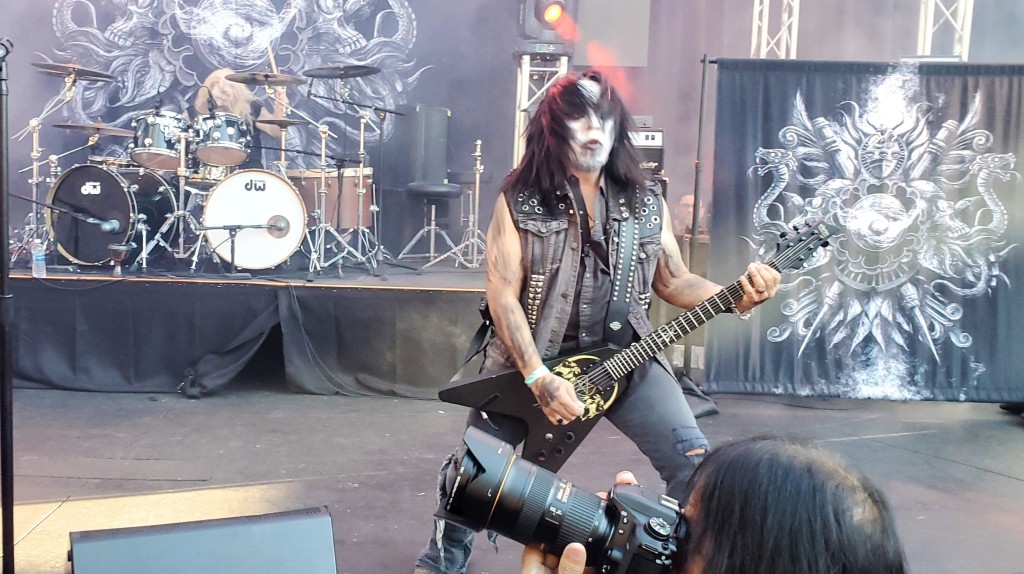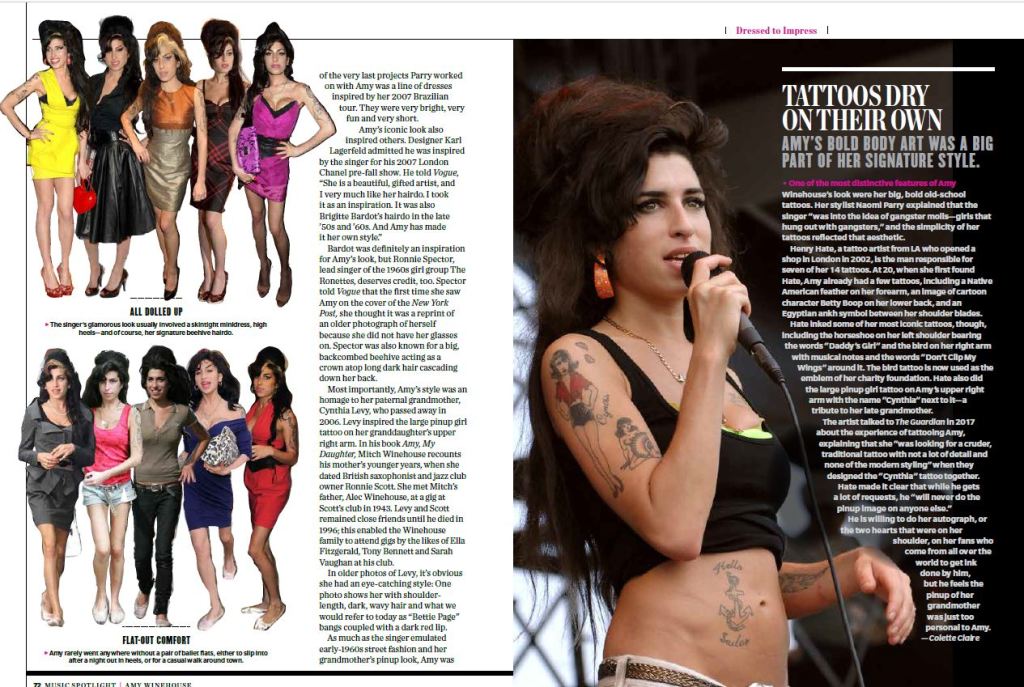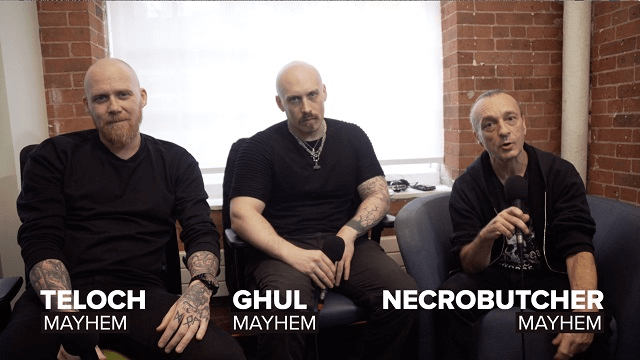The nu-metal pioneers have been going strong for more than a quarter century
Original link https://consequence.net/2023/01/ranking-every-korn-album/
Michael Pementel, Colette Claire, Langdon Hickman and Jon Hadusek
January 18, 2023 | 2:00pm ET
Welcome to Dissected, where we disassemble a band’s catalog, based on the oh-so-exact science of personal opinion, rants, debates, and the love of music. In this installment, we rank Korn’s discography so far, including their latest album, Requiem.
Rising out of Bakersfield, California, Korn emerged on the scene in the early 1990s and quite literally changed the face of heavy music. Not many bands can say they helped invent a new genre, but that’s exactly what Korn did as pioneers of nu metal.
On the heels of festivals like Lollapalooza that featured hip hop, grunge, alternative, and hard rock artists on the same bill, it seemed logical that all of these elements would eventually come together in one group. As singer Jonathan Davis put it in an interview with Revolver, “At that time, we were just emulating our influences, Sepultura meets Cypress Hill.”
With down-tuned chugging riffs played on effects-driven seven-string guitars by Brian “Head” Welch and James “Munky” Shaffer, weird hip-hop inspired noises and funky bass lines provided by Reginald “Fieldy” Arvizu, and the angry and mournful wail of Davis, Korn sounded like no other band before them.
Davis’ own personal demons are a large part of what has always made Korn so fascinating over the years. He has never been shy about discussing his personal problems in his lyrics, a fact which is equal parts disturbing and endearing. He laid bare his traumatic childhood on their self-titled debut, and explored the trappings of fame on Follow the Leader and Issues.
Overall, this ranking was a difficult task, as Korn have had their experimental moments, such as exploring a more industrial sound on 2005’s See You on the Other Side and teaming up with dubstep artist Skrillex on 2011’s The Path of Totality. Korn have a very solid catalog in their 25-plus years as a band, so after some verbal jousting, we managed to come up with the following ranking of every Korn album from worst to best.
— Colette Claire
Editor’s Note: This ranking was originally published in 2019 but was updated in 2023 to include Korn’s latest album, 2022’s Requiem.
- The Path of Totality (2011)
Korn – The Path of Totality
Here to Say (Analysis): It is always commendable when a band strives to go outside its comfort zone and expand upon its sound; in the case of Korn’s The Path of Totality, however, the experimentation resulted in a misstep. Presenting a dubstep-infused record, Korn collaborated with such artists as Excision, Noisia, and Skrillex. The Path of Totality is a daring attempt to try something different; blending metal with dubstep allows for moments of catchy adrenaline, guiding the listener through waves of electronica melody. That said, these positive moments pop up throughout the album, rather than make up the material as a whole.
The Path of Totality mostly comes across as a jumbled-up mess. While the electronic elements are a hit or miss throughout the album’s runtime, where it really falters is in its loss identity. There’s very little about the LP that feels like a Korn album. Even on multiple listens, The Path of Totality feels like it is devoid of meaning or any essence that represents the band. The dubstep component also becomes obnoxious overtime, with some of the tracks lacking creativity.
Got the Might (Best Song): Featuring dubstep superstar Skrillex, “Narcissistic Cannibal” is not only vibrant and catchy, but it’s also one of the few cuts on the album that captures the emotional depth of the band. Jonathan Davis delivers powerful emotion through his singing and lyrics; when the hook arrives, the track rises into a hypnotic blend of frenzy and melancholy, the combination resonating through the instrumentation.
Make It Bad (Worst Song): Also featuring Skrillex, “Get Up!” lacks both emotion and songwriting depth. In its presentation, “Get Up!” offers nothing to set itself apart from other cuts on the record, coming across as a generically bombastic presentation. Feeling more like filler, the song is unimaginative in its use of electronic instrumentation, while also providing nothing of substance in either the vocals or lyrics. — Michael Pementel
- Korn III: Remember Who You Are (2010)
Korn – Korn III Remember Who You Are
Here to Say: Often credited for ushering in the nu-metal sound, Korn certainly have a to which they mostly stick: heavy break downs, rhythmic growling, funky bass, hip-hop inspired beats, guitar squeals, and chunky, down-tuned riffs. Rinse and repeat. Even when they get experimental, it stays in this vein. In a way, this makes Korn dependable, kinda like AC/DC, where what you see is what you get. Unfortunately, Korn III: Remember Who You Are came off as a lesser retread of the band’s early efforts.
As the first album for Roadrunner Records, it seemed that being on the semi-indie label inspired Korn to go back to their roots. In interviews at the time, Davis claimed the band was moving away from the more progressive albums like See You on the Other Side and the Untitled 2007 album. They even went so far as to go back to working with Ross Robinson, who produced their self-titled debut and Life Is Peachy.
Despite the fact that Korn III seemed determined to try to recapture the magic of the old days, they say you can never go home, and this seemed to be the case. Even songs like “Lead the Parade” and “Fear Is a Place To Live”, with their funky, crunchy Life Is Peachy-era sound, do not save this album of mostly filler songs.
Got the Might: With its insistent tempo and straight forward hook and lyrics, “Oildale (Leave Me Alone)” definitely harkens back to Korn’s debut album. Although, on this track it still feels original unlike some of the others on the album. Hearing Davis’ haunting voice clean and not saturated with effects is also a nice change from Korn’s experimental phase. The lyrics reference a rundown area of Bakersfield, California, where Korn are from, keeping with the “going home” theme. This is one of the standout tracks on Korn III and it is obvious why it was chosen as a single.
Make It Bad: “Pop a Pill” is disjointed in a Life Is Peachy sort of way, but that’s not a good thing on this particular track. It feels very uneven and unfinished. There is also a very hollow sound to the drums that is off putting and is probably a result of the purposely lo-fi sound of the production. The band may have spent too much time trying to recapture the past and not enough on production value and song writing. –– Colette Claire
- Take a Look in the Mirror (2003)
Korn – Take a Look in the Mirror
Here to Say: It’s hard to feel terribly excited about 2003’s Take a Look in the Mirror. It followed Untouchables, one of the group’s heaviest releases and the capstone of a landmark run in metal, and showed the group experimenting with their form, but often feels confused and aimless. None of the songs leap out as absolutely terrible but likewise none have the same electricity or historical weight to them that their earlier works do.
Even their worse records at least stick in the mind for one reason or another, while Take a Look in the Mirror, mired in the issues with addiction swirling around the group and their family at the time, feels lost in the murk, the band able to do a decent pastiche of themselves but, at least this time, struggling to find consistently compelling ideas in that headspace.
Got the Might: “Play Me” foregrounds the hip-hop influences of the group that had been on the back foot for several records prior to this. It’s the least typical of the tracks here and that plays to its benefit; where so many of these songs play it safe with the Korn sound, this one takes a risk and winds up elevating itself over an otherwise middling album.
Make It Bad: “Y’all Want a Single” is one of the most tedious and infantile songs of Korn’s discography. They’ve drawn on the impish fun of older school hip-hop and funk before to their success, but here it feels like the band confirming the most condescending takes about the target audience of their music with an eye-rolling swear-laden refrain offering none of the emotional power they can sometimes summon. — Langdon Hickman
- The Paradigm Shift (2013)
Korn – The Paradigm Shift
Here to Say: The band’s 11th studio record not only marked the return of original guitarist Brian “Head” Welch, but also displays the band revisiting some of their roots; The Paradigm Shift has Korn returning utilizing metal with electronic elements. With cuts like “Prey for Me”, “Love & Meth”, and “Mass Hysteria”, Korn offer compositions that ride with adrenaline and emotion. In some ways, the record feels like a revamped styling of their older sound; the way a song will whip away with melody, the bass pumping and lyrics exuding heartache, allow for a collection of mostly intriguing cuts.
However, The Paradigm Shift is mostly a record representing transition; with Head back in the band, one can sense Korn attempting to find themselves. Even with a decent flow of heavy tracks, The Paradigm Shift feels a little messy at times — some cuts lack depth, or even make for compositions full of wonky instrumentation. These speed bumps hold the record back from fully realizing its potential, resulting in it being more of a stepping stone for what comes next. As this stepping stone, The Paradigm Shift provides a taste as to how Korn would continue to flesh out their sound as they moved forward.
Got the Might: Embracing Korn’s new blend of adrenalized instrumentation, “It’s All Wrong” makes for one of their heavier, more emotional tracks in recent times. The electronic component of the cut makes for an eerie atmosphere, all while the guitars, drums, and bass drive home a sinister energy. Davis delivers some excellent lyricism, exuding this despairing essence that plays off the instrumentation.
Make It Bad: Whereas other cuts on the record provide heavy rhythms, wild melodies, or even a sense of atmosphere, the instrumentation of “Never Never” feels stagnant. While there are moments where one could find it “catchy,” the music feels like it is just lingering in place (and not in a way that utilizes atmosphere). The lyricism is also lackluster, but one could blame the instrumentation in how it restrains the emotional weight attempting to be felt. — Michael Pementel
- Requiem (2022)
Korn Requiem
Here to Say: The release of Requiem in 2022 came after a dark period for Korn and Jonathan Davis in particular. While on the road in 2021, multiple members of the band’s touring party contracted COVID-19, including Davis. He had a serious battle with the disease, later revealing that he didn’t eat for a month after he tested positive. It was a long recovery for Davis, who was forced to perform while sitting and even took oxygen when he wasn’t singing.
Nevertheless, Korn trudged on and maintained a busy workload, eventually dropping Requiem in 2022. Perhaps some fatigue had set in. While it’s far from a bad album, it dials back some of the more extreme elements of the band’s music for a more mid-tempo, melodic set of songs — far safer and more lethargic than The Nothing from a few years prior. The band successfully keep a cohesive mood throughout Requiem, but the writing is just not sharp enough to warrant placing it any higher on our ranking. In short, when we reach for a Korn album from this era, this won’t be our first choice.
Got the Might: “Worst Is on Its Way” stands out with its prog-ish riffs and dense vocal layering. The lyrics are also quite poignant given Davis’ experience with COVID: “I feel it coursing through the inside / And I can’t get away, away inside / I feel it breathing and I realize / The worst is on its way.”
Make It Bad: “Penance to Sorrow” is an example of the bland songwriting that drags the album down. Tossed-off generic radio rock melodies and a rigid verse-chorus-verse structure cause this one to quickly fade into the background. — Jon Hadusek
- Life Is Peachy (1996)
Korn – Life Is Peachy
Here to Say: If their self-titled debut album represented the anger and confusion of adolescence, Life Is Peachy was the growing pains of becoming an adult. Korn’ sophomore effort was an interesting response to the visceral intensity of their first album. It increased the hip hop influence in their sound in a sporadic way that would eventually become more focused on Follow the Leader. While still very much maintaining the signature Korn sound of down tuned guitars and chugging bass, Life Is Peachy also has more dreamy moments like the verses of the song “Chi,” the breakdowns of “Swallow,” or the quirky intro to ”No Place to Hide.”
If anything, Life Is Peachy certainly has to be commended for incorporating bag pipes into a cover of “low rider.” Life Is Peachy has a very spontaneous feel to it, because it very much was. The band had been constantly touring for their debut album and had no songs written, but the buzz on the band was huge, so they took that momentum with them into the studio.
Got the Might: “A.D.I.D.A.S” is not only great because it was the “hit” from this album, but it is one of the more focused tracks. It doesn’t meander like some of the other songs and has a catchy, if not creepy, hook for the chorus. Davis shows off the fact that he can actually sing as well as growl as he chants the mantra “All day I dream about Sex,” something every adolescent at the time could relate to.
Make It Bad: “Ass Itch” begins with the line “I hate writing shit/ It is so stupid”, suggesting that Davis was pulling a lot of the lyrics for this album out of thin air. The song itself sounds similar to “A.D.I.D.A.S: and other better tracks on the album. As it wanders off into the bridge section, it sounds more like the band warming up to write a better song. — Colette Claire
- Untitled (2007)
Korn – Untitled
Here to Say: If we temporarily discard the considerations of how central this record may or may not be to understanding Korn’s work as a whole and approach it unattenuated, we find a set of incredibly inventive metal/hard rock songs that live in a playful and pleasant prog-adjacent space, not unlike the work of Deftones from around the same time. Both groups had seen the rise of nu metal but, despite inspiring much of the movement, had similar ranges of much wider influences spanning from electronic music to goth rock to art rock to the weirder fringes of indie and alt rock from the ’80s forward.
Untitled can be seen as Korn’s own Saturday Night Wrist, an album that in one world signals an eruptive shift out of one style toward a much broader and creatively wide space. The only difference is that Deftones committed to that path while Korn recoiled, a move that seemed to staunch fruitful creative forward motion until 2016’s The Serenity of Suffering. It may not be as solidly central to Korn as their groundbreaking, epochal and impressive first decade, but Untitled is still a strong record.
Got the Might: “Killing” is the most direct industrial and death metal worship Korn has put to tape. We frequently hear nu metal groups discussing extreme metal as an influence, but it’s easy to see that influence as being diluted by other concerns; here, Jonathan Davis puts on a death growl that would be fitting in an Immolation tribute group with riffs to match, married to a potent pop chorus.
Make It Bad: “Love & Luxury” is an admittedly compelling piece of direct Faith No More worship, one of two Mike Patton projects that laid major groundworks for nu metal in general and Korn in specific. Sometimes a good song is not a good song for a specific record or project, and in this instance we have a strong and inventive track that unfortunately should have either been held back for a side-project or made more archetypal of an even more divergent record. –– Langdon Hickman
- The Serenity of Suffering (2016)
Korn – The Serenity of Suffering
Here to Say: Coming off The Paradigm Shift, Korn make a solid step forward in recapturing their iconic sound. At times, the record dives deep into that sound, with tracks like “Rotting In Vein” coming across as material we might’ve heard back in the 90s. At the same time, though, the band embrace their newer, cleaner production. The Serenity of Suffering also features the band exploring more atmospheric cuts such as “Black Is the Soul”; even as the guitars and drums bring out that nu metal aggression, Davis’ voice brings an airy atmosphere to the track, offering this nightmarish quality. Emotionally speaking, The Serenity of Suffering is one of Korn’s weaker works; there is little that sticks out as memorable, the primary appeal coming from the instrumental component.
Though the record can become a bit repetitive throughout its runtime, the band really hone in on their old-school style. However, it’s obvious here that Korn are not interested in sticking to just that nu metal sound that made for their earlier work; for longtime fans of the band, this puts them in a place where they have to either accept or reject the band’s new sense of stylization.
Got the Might: “The Hating” feels like a b-side to one of the band’s earlier records; from the blend of singing and screaming, to the beating instrumentation, the song gives off nostalgic vibes. At the same time, the band also bring a sense of atmosphere to the composition, adding another layer of appeal; the song makes for a strong example of how the band are able to take their core sound and expand upon it.
Make It Bad: There isn’t much that allows “Take Me” to stick out compared to the other tracks. Whereas the record involves a decent amount of intriguing grooves and heavy offerings, “Take Me” comes across as stagnant. It is one of the record’s more generic tracks, providing no sense of identity. Not only is it devoid of instrumental flavor, but neither the vocals or lyrics help to carry the composition in a positive direction. — Michael Pementel
- See You on the Other Side (2005)
Korn – See You on the Other Side
Here to Say: Korn were deep into their experimental phase when See You on the Other Side came out. This was probably prompted by Davis’ work on the Queen of the Damned soundtrack just a few years prior, where he worked with Marilyn Manson, Chester Bennington, and Jay Gordon of Orgy. In the wake of Queen of the Damned, Korn further embraced synthesizers even more than it did on Issues and veered towards an almost industrial production. Certainly, it still maintains the signature Korn sound, but takes it in a darker direction on songs like “Souvenir” and “Seen It All”.
A stand out on this album is the dark but groovy “Coming Undone”, with its incessant beat that acts as a showcase for Davis’ maturing lyrics like, “Since I was young/ I tasted sorrow on my tongue/ And this sweet sugar gun does not protect me.” This is a far cry from “I hate writing shit” as he famously sang on Life Is Peachy. Two other notable gems are “Throw Me Away” and “Love Song.” These songs threw people off at first with their very synthesized production quality that was quite a departure from Korn’s debut. However, when they got an acoustic treatment during a performance by the band on MTV’s Unplugged a little over a year later, it became evident that they were really well written songs. The hauntingly beautiful “Tearjerker” is a fitting end to See You on the Other Side‘s rather introspective journey.
Got the Might: “Twisted Transistor” is both catchy and groovy in a way that only Korn can be. The synthesized elements on this don’t take over as they do on others songs on this album. The lyrics also feel genuine as Davis addresses his fans: “A lonely life/ Where no one understands you/ But don’t give up because the music do.” The song is memorable, heavy but also melodic and encompasses all of Korn’s strengths as a band.
Make It Bad: “Getting Off” seems to backslide from the progress that is evident on most of See You on the Other Side. It almost sounds like an outtake from Issues that didn’t make it on that album. It’s trying to have a hooky chorus, but just isn’t quite getting there. The lyrics also go back to Davis’ more blunt style of writing with the pre-chorus “Licking your own skin, so trippy/ Squeezing your own ass, so pretty.” — Colette Claire
- Untouchables (2002)
Korn – Untouchables
Here to Say: There are moments and songs on other records that are better, riffs and vocal lines that are better, but there has never been a better sounding record Korn put to tape than Untouchables. Famously being one of the very first records ever recorded at 96k sampling rate, it was cutting edge at the time, and the band chose to highlight this by also penning their absolutely heaviest songs. This is by most measures of the group the end of their golden period that began with Follow The Leader, where nu metal was king and they were at the absolute forefront of the genre commercially.
Featuring singles like “Here To Stay” and “Thoughtless”, as well as album cuts like “Hating” and “Wake Up Hate”, Untouchables is one of Jonathan Davis’ personal favorites. Back in 2015, in a feature for Vice, the vocalist listed it as his second favorite of the group’s albums up to that point; until their most recent LP, it had the highest aggregate review of any of the band’s work. There are other albums that are more central to understanding Korn, but Untouchables remains an undeniable metal record.
Got the Might: The KMFDM worship of “Wake Up Hate” ranks as the best from this record, a martial industrial anthem that underscores the negative impulses that drive the creative core of this band. Make no mistake: this record is stacked with great songs, but this one sums up both the band as a whole and this album in particular in a way none of the others here do.
Make It Bad: There aren’t any weak links here, but “Bottled Up Inside” is perhaps the last essential for this album to make its point. Feeling like a combination of lead track “Here To Stay” and second single “Thoughtless”, it is admittedly a compelling track but one of the few to lack something truly and totally its own, making it just a hair weaker than the rest of the fair presented. Not bad if this is your weakest, though. — Langdon Hickman
- The Nothing (2019)
Korn – The Nothing
Here to Say: The Nothing sees Korn venturing further with their sound; it feels as if they have found a balance within their core sound, use of melodies, and minimal use of atmospheric moments. Over the course of the two records prior, Korn attempted to blend a variety of musical elements together; while their various experimentations have not always paid off, The Nothing succeeds throughout. This is a record that appeals to new and old fans, given the range in stylization it offers. From the bombastic “Idiosyncrasy” to the catchy and aggressive “H@rder”, The Nothing shows Korn coming into their own and providing a little bit of something for all listeners.
Lyrically, the record makes for one of the band’s stronger releases in some time; there’s a lot more feeling in Davis’ words, each song packing its own brand of anger and heartache. “The Darkness Is Revealing” makes for a solid track of self reflection, with Davis’ voice giving off emotion.
As a whole, The Nothing is the result of Korn pushing themselves and discovering where they stand musically; having now worked through multiple records since Head’s return, The Nothing stands as a strong representation of how far they have come.
Got the Might: Looking back on the band’s more recent material, some of Korn’s best work comes when they are able to infuse a song with their classic nu metal sound while also adding more musical depth. With “The Loss”, Korn explore a nightmarish landscape built on instrumental aggression; the blends of hazy melody and guitar thrashing, alongside beating drums and a steady bass, allow for a composition brimming with feeling.
Make It Bad: Compared to the other more emotionally riveting tracks, as well as the more energized and atmospheric cuts, “Finally Free” feels restrained. Not only does it add nothing to the record, but as a stand alone song, it lacks any sort of intrigue or identity. The track makes for one of the minor speed bumps on The Nothing. — Michael Pementel
- Issues (1999)
Korn – Issues
Here to Say: Issues was total fan service for the kids that picked up on Korn during Follow the Leader‘s meteoric rise and was a huge turning point in Korn’s career. They even let fans draw the four different covers that were released as part of an MTV contest. Hot on the heels of the mega success of Follow the Leader, Korn went from an angry, unpolished and unruly group of young men to seasoned professionals who had toured the world several times over. Hits on Issues like “Make Me Bad” and “Falling Away from Me” prominently displayed a more mature, polished Korn that could be digested by the masses.
The album is not all happiness and sunshine, however. Korn maintained their edge on songs like “Trash”, “Beg for Me”, and “Counting,” which have a very Follow the Leader-ish sound to them. Overall, though, the LP had a more progressive sound than earlier albums, but effectively combined the band’s heaviness with their more experimental work. There are slow and dark tunes like “Dirty,”, “4U”, and “Am I Going Crazy” that were an indication of what was to come as they entered into more industrial territory on subsequent albums. This combination sometimes goes in a meandering direction on their future work, but is reigned in on this record by big name producer Brendan O’Brien.
Got the Might: On “Make Me Bad”, Korn made excellent use of their penchant for heaviness and hip hop. The song opens with a slick, groovy hip hop beat and then jumps into a heavy in-your-face Korn riff. Then Davis — in a call and response with himself — uses his breathy voice juxtaposed with his epic singsongy voice, which makes for a memorable combination. The chorus hook is at once catchy and heavy, making this one of Korn’s best singles.
Make It Bad: “Let’s Get This Party Started” sounds like three different songs if you cut them up and then stuck them back together with duct tape. It starts with a dark, gut-wrenching verse as Davis anguished voice sings, “Please give me some of it back/ The feelings I had.” Then it veers into a weird, new-wavy pre-chorus before it jumps into the chunky typically Korn chorus with a Dr Dre-ish back beat. It seems to be a missed attempt to be avant-garde that Korn would eventually pull off much better on See You on the Other Side. — Colette Claire
- Korn (1994)
Korn – Korn Debut
Here to Say: Korn’s self-titled debut is one of those albums, like Slipknot’s debut, that you owe yourself a listen even if you think you might not enjoy it. What you are hearing is the changing of the times. With metal on the decline commercially, Korn’s 1994 LP introduced a sound that would rule mainstream metal for over half a decade. That’s an impressive run by any metric, and Korn’s debut has the songs to back it up, offering a clear reason why so many were moved to follow this path.
Even if you don’t like the genre that followed, you might be surprised by how many strong songs and sonic concepts are captured here. The emotions here are as raw as any of the best thrash metal records and the production and songwriting as raw as quality death metal but in a totally different package, one that’s undeniably metal even if a form that we’d never seen before. This record moved everyone from Steve Vai to Sepultura.
On future albums like Follow the Leader and Issues, Korn would achieve massive success, knocking off the likes of *NSYNC and Backstreet Boys from the top of MTV’s Total Request Live countdown, but their debut disc is arguably their most important album. It was an undeniable game-changer in the world of heavy music.
Got the Might: “Daddy” is the song to silence all the doubters. There are other more immediate tracks on this record, but there are none others here or arguably anywhere else in their discography that are more powerful. For the group at this time, rawness was the point, a means to reach as deep inside as they could, and “Daddy” is the deepest they ever got for a long, long time.
Make It Bad: It’s hard to defend “Shoots and Ladders”, a song that shoots for depth and falls way, way short. The idea of calling out nursery rhymes may sound good on paper (especially when singling out how some of them are fairly racist) but in execution the song turns into a cloying sing-song affair that doesn’t mesh well with the raw, emotional and clattering post-thrash of the album. — Langdon Hickman
- Follow the Leader (1998)
Korn – Follow the Leader
Here to Say: Korn’s third studio LP, Follow the Leader, stands as their finest achievement. Building off the aggressive instrumentation and savage emotions found in their past two records, Follow the Leader is the band presenting their tightest material; from the killer grooves on “It’s On!”, to the catchy adrenaline of “Got the Life” and the creepy presentation of “Dead Bodies Everywhere”, the record represents the band’s strongest delivery in variety. Follow the Leader also represents the Korn’s remarkable ability to infuse numerous musical elements into their work; from eerie guitar strings to funky bass lines, to pulse-pounding drums and rapping, the record offers tremendous creativity.
Of all their albums, Follow the Leader feels the most like Korn; when you look at the LPs that would come after it, many of the stronger qualities found in those releases can be found in Follow the Leader. In some ways, the record is a sign for the band’s interest in experimentation and how they would strive to expand upon their material. While the past two records made for interesting works of metal brutality, Follow the Leader is more of a testament to the limits that music has to embrace numerous ideas; we see how far metal has come over the past 20 years alone, and this record is an example of how genres evolve. Follow the Leader is not only a nostalgic gem, but a cornerstone in heavy metal history.
Got the Might: “Freak on a Leash” makes for one of the most iconic cuts from Korn. Not only does it play to their eerie nu metal sensibilities, but the material as a whole exudes a chilling presence; Davis’ vocals ride off the slapping guitars and bass, the drums slowly coming down in the flow. The song unravels with heavy and atmospheric instrumentation and sprawls with ominous vibes.
Make It Bad: While “Cameltosis” does have some interesting instrumental moments, it lyrically and vocally is the dullest track on the record. Not only do the vocals bring no emotion to the material, but the lyrics lack any sort of depth to them. Compared to the other songs on the album that involve instrumental intricacies and lyrics with feeling, “Cameltosis” is a throw-away cut. — Michael Pementel





















